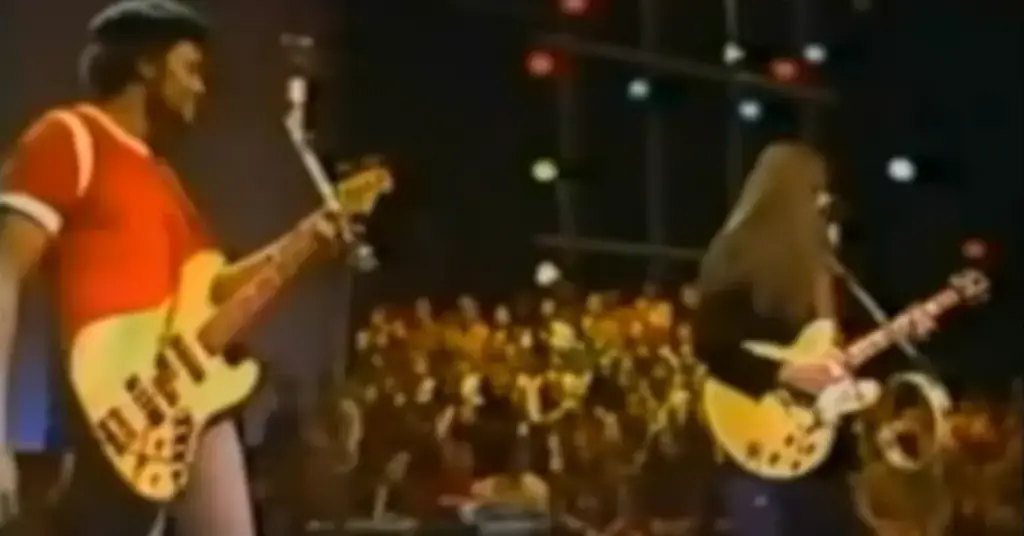When The Doobie Brothers released “Takin’ It to the Streets” in 1976, it marked more than just a new single—it marked a bold transformation. With the arrival of Michael McDonald and a fresh infusion of R&B and gospel energy, the band moved from laid-back boogie rock to something deeper, smoother, and socially resonant.
The title track from their sixth studio album, “Takin’ It to the Streets” blended funky rhythms, silky harmonies, and pointed lyrics to create a track that grooves hard and speaks louder. It was a sonic evolution—and it hit home in a big way.
A New Voice, A New Vision
By the mid-’70s, founding member Tom Johnston was sidelined by health issues, and The Doobie Brothers were at a crossroads. Enter Michael McDonald, the former Steely Dan sideman with a voice like velvet and soul to spare. He wasn’t just a keyboard player—he brought with him a new musical and lyrical sensibility that would redefine the band’s sound.
“Takin’ It to the Streets” was the first song McDonald wrote for the band—and it became the foundation for a whole new era. His gospel-infused delivery, chord-rich progressions, and socially aware lyrics took The Doobies into uncharted but deeply rewarding territory.
“You don’t know me but I’m your brother…”
That opening line doesn’t just grab your attention—it challenges you. It sets the tone for a song that’s as much about compassion and solidarity as it is about a groove you can’t resist.
Lyrics: Social Commentary with Soul
Unlike the sun-soaked cruising anthems of earlier Doobie Brothers hits like “Listen to the Music” or “China Grove,” “Takin’ It to the Streets” directly addresses poverty, injustice, and indifference. Inspired by McDonald’s own observations of economic inequality and social struggle, the lyrics urge listeners not to ignore the suffering around them.
“Take this message to my brother / You will find him everywhere…”
It’s a call to action. A reminder that change doesn’t come from silence—it comes from showing up. But despite its serious message, the song never sounds heavy. It uplifts even as it confronts, thanks to its gospel roots and life-affirming melody.
The Sound: Gospel Groove Meets Blue-Eyed Soul
Musically, “Takin’ It to the Streets” is a fusion of R&B, funk, and smooth rock. The rhythm section lays down a tight, swinging pocket, while McDonald’s Rhodes piano and organ fill the track with warmth and motion. Add in gospel-style backing vocals, sax flourishes, and Pat Simmons’ steady guitar, and the result is a sound both spiritual and streetwise.
And, of course, there’s that voice—McDonald’s rich, emotional baritone soaring over the arrangement with equal parts urgency and grace. He wasn’t just singing the song—he was delivering a sermon, and the congregation was the airwaves.
Chart Performance and Cultural Impact
“Takin’ It to the Streets” reached #13 on the Billboard Hot 100, and while it wasn’t the band’s highest-charting single, it became a cornerstone of their live shows and identity. It signaled that The Doobie Brothers weren’t afraid to evolve—or to say something that mattered.

The song has since been covered by artists across genres and used in films, documentaries, and television to underscore themes of protest, perseverance, and community.
And in times of social unrest and inequality, it continues to feel as relevant as ever.
Legacy: The Doobies with Depth
“Takin’ It to the Streets” ushered in the Michael McDonald era of The Doobie Brothers—one that would yield hits like “What a Fool Believes” and “Minute by Minute.” While some fans missed the rawer, rockier sound of the early days, others found a deeper emotional connection in the band’s soulful new direction.
Either way, there’s no denying that “Takin’ It to the Streets” was the moment the band stepped beyond just feel-good jams and started speaking truth through their music.
Final Thoughts
“Takin’ It to the Streets” is more than just a great track—it’s a mission statement. It’s the sound of a band growing up, speaking out, and still making you dance while they do it.
With its groove, grit, and heart, it stands as a timeless reminder that music can be both a celebration and a catalyst.
So turn it up, open your ears, and remember:
Sometimes the street is exactly where the message belongs.


Facebook Comments